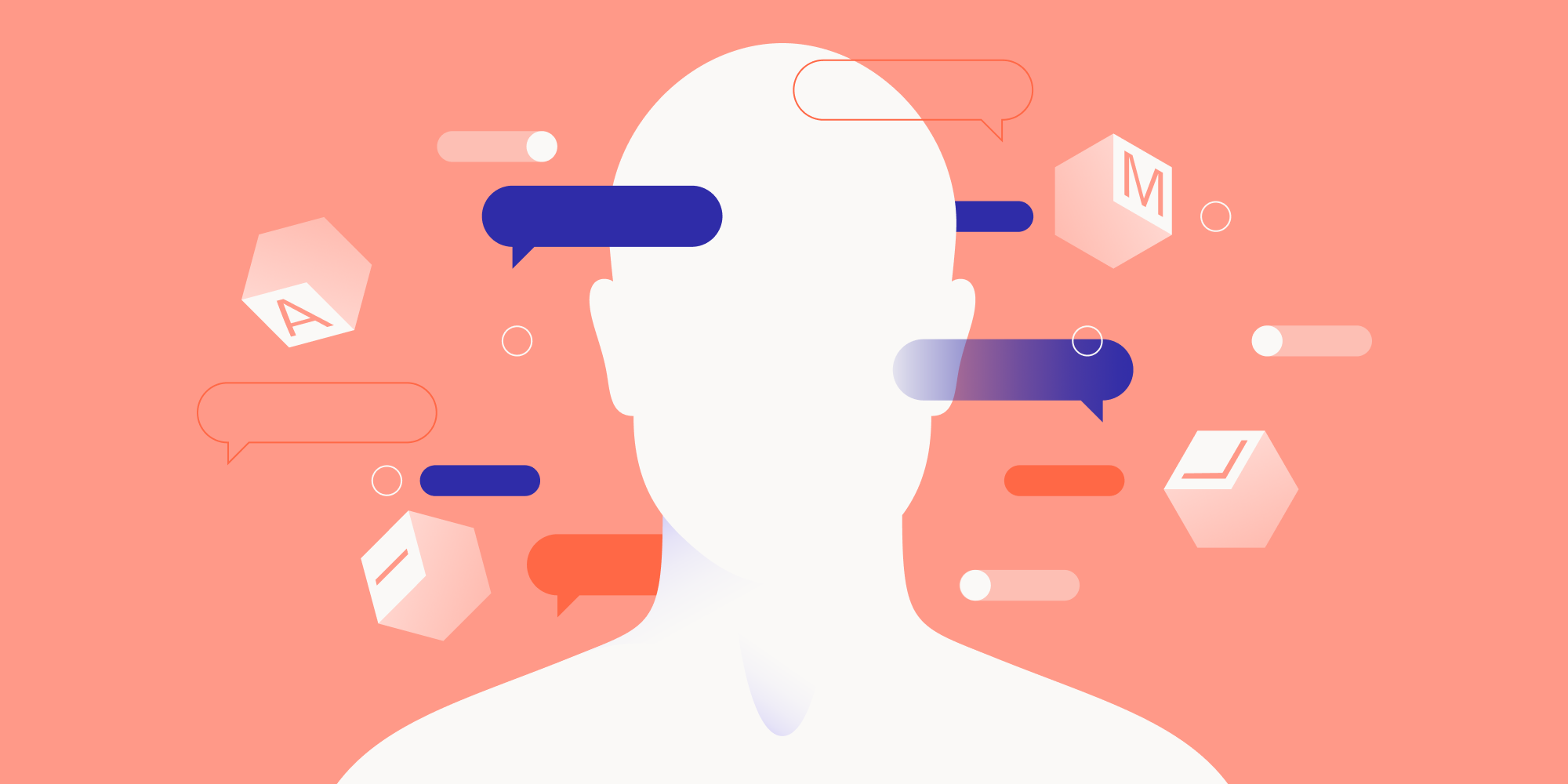AI Basics for the Brand Marketer
Illustration by Colin Miller
At Deeplocal, we create interactive experiences that bridge physical and digital mediums. We’ve used AI and ML to transport fans into a cartoon universe, create worlds out of words, build electromechanical flowers that bloom and respond to people in real time, and more. For over a decade, AI has helped us turn our wildest ideas into reality.
With new AI tools right at our fingertips, there is a lot for marketers and creatives to learn and navigate. In this guide, we’ll break down key AI concepts and use cases and how they relate to brand marketing. Hybrid intelligence is the powerful result of using human ingenuity to determine which machine intelligence tools to use, how to use them, and when. So it’s important to understand AI’s core fundamentals and its full range of capabilities for creative applications.
Let’s get into it.
Artificial Intelligence
Artificial Intelligence is the development of computer systems to do tasks that previously required human intelligence, such as learning and problem-solving. This is a simulation of intelligence; the computer uses logic and math to arrive at conclusions.
Algorithms and Models
An algorithm is a series of steps followed in a calculation or other problem-solving operations. Think of it as a set of instructions that a computer follows. A model is a computation or formula formed as a result of an algorithm that takes a set of values as inputs and then provides new values as outputs.
Machine Learning
A subset of AI, machine learning is when computers can learn, by being trained on a set of data, how to do something using mathematical models without being explicitly programmed to do so. If AI is the what, ML is the how.
As a marketer, you’ve probably already used ML for digital marketing tasks such as customer segmentation and campaign optimization. This helps you find potential customers and effectively communicate with them.
Deep Learning
A subset of machine learning, deep learning is capable of working with even more data and different types of data, like photos, video, and audio. It simulates the human brain’s neural networks to learn and recognize complex patterns across massive data sets.
As a marketer, deep learning capabilities are a more recent addition to the toolbox. One common use for marketers is sentiment analysis of text, such as product reviews and customer survey analysis to get a better understanding of who customers are and what drives their decision making. Other tools utilizing deep learning pertain to advanced audience segmentation, content personalization, and ad targeting.
Natural Language Processing
Natural language processing has been one of the most influential innovations in driving AI technologies forward. It pulls together machine learning, deep learning, statistics, and linguistics to enable computers to understand human language the same way we do, which makes communication between humans and machines feel more organic.
You’ve almost certainly used NLP as a marketer and in your day-to-day life. Customer service chatbots and voice assistants, like Google Assistant and Alexa, use NLP for comprehending and responding to humans. Again, AI is knocking down the barriers between humans and machines.
Computer Vision
Just as humans have developed tools to communicate words and sounds with computers, we’ve also created tools for them to understand visual information. With the proliferation of digital photos and videos, computers have been trained on huge sets of pre-identified images. With continuous training, they piece together the data points that comprise images to learn what they are and respond to user input accordingly.
As a marketer, you have likely encountered computer vision if you use social media AR filters, which use facial feature detection, or social media monitors that recognize products.
Generative AI
Generative AI (for text, image, audio, etc.) has taken the world by storm. These models produce new data points based on training data. For example, Midjourney and Stable Diffusion are trained on billions of images and words so they can handle most inputs. Here are some types of generative AI:
Diffusion-Based Models – These models start with random noise and turn the output into an image via a series of steps. Think: text-to-image models, like DALL-E.
Autoregressive Models – These models try to predict the next step in a series. Think: ChatGPT and most large language models.
Large Language Models
Large language models (LLMs) are designed to recognize patterns—they’re trained to choose the best next word in a string of words. Popular LLMs include ChatGPT, Google’s Bard, and Bing’s chatbot. After training with huge data sets, these models craft convincing messages that mimic how humans write.
At this point, most agree that chatbots are good for first-pass copy or for generating ideas, but they can’t replace human copywriters. For example, a chatbot might respond in a way that objectively “sounds good,” but contains factual errors.
Wrapping Up
Recent advancements in LLMs and generative AI are impressive and exciting, but AI isn’t new—our lives are already shaped by it. It’s all around us in tech such as spam filters, autocorrect, image and facial recognition on your phone, voice assistants, fraud detection, recommendation engines, and more.
By understanding the basic underpinnings of AI, marketers can discern which tools to deploy whether they’re seeking out new customers, creating content, strategizing for a campaign, communicating with stakeholders, or just trying to make their day to day a little easier. As AI progresses, brands and marketers need to position themselves to evolve alongside it.
Next time, we’ll show you how Deeplocal uses AI and ML for recognition, generation, transformation, and scaling in a variety of projects that connect people to the brands they love. You’ll learn how AI is an integral part of our experiential marketing strategy—to translate complex products and technology into fun, intuitive interactions, and to blend the digital and physical worlds.

